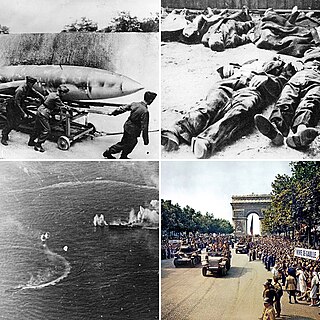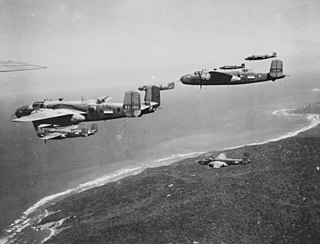This article has multiple issues. Please help improve it or discuss these issues on the talk page . (Learn how and when to remove these template messages)
|
The bombing of the Dutch port of Enkhuizen was carried out on 15 March 1945 by RAF planes.
This article has multiple issues. Please help improve it or discuss these issues on the talk page . (Learn how and when to remove these template messages)
|
The bombing of the Dutch port of Enkhuizen was carried out on 15 March 1945 by RAF planes.
The reason for the attack was, according to British reports, the presence of 12 Wasserschutzpolizei boats which were moored in the port. These small boats had been stationed by the Germans to prevent Dutch residents from escaping to the liberated other side of IJsselmeer. There were also fears that the small boats could be used for a German attack on the liberated east of the Netherlands.
At approximately 15:30 on Sunday, March 15, the bombardment started with an attack by four Spitfires on the small German boats. The planes flew low over Enkhuizen from the west. Though the bombs covered much of the area the boats in the dry dock were missed. The four Spitfires turned around above the IJsselmeer and returned for another attack, which was also unsuccessful. One of the British planes was hit during the attack and it came down near Katwoude. Here the pilot was rescued by the Dutch resistance, and taken into hiding for the remainder of the war. During the two minutes the bombardment lasted, the aircraft dropped 1.7 tons of bombs on the port of Enkhuizen.
The Drommedaris bridge collapsed, and some buildings around the port, especially the timmerwerkplaats, sustained heavy damage. 23 people were killed. [1]

The IJsselmeer, also known as Lake IJssel in English, is a closed off inland bay in the central Netherlands bordering the provinces of Flevoland, North Holland and Friesland. It covers an area of 1,100 km2 (420 sq mi) with an average depth of 4.5 m (15 ft). The river IJssel flows into the IJsselmeer.

The siege of Malta in World War II was a military campaign in the Mediterranean theatre. From June 1940 to November 1942, the fight for the control of the strategically important island of the British Crown Colony of Malta pitted the air and naval forces of Fascist Italy and Nazi Germany against the Royal Air Force (RAF) and the Royal Navy.
The Netherlands entered World War II on May 10, 1940, when invading German forces quickly overran the country. On December 7, 1941, after the attack on Pearl Harbor, the Netherlands government in exile also declared war on Japan. Operation Market Garden, which started in 1944, liberated the southern and eastern parts of the country, but full liberation did not come until the surrender of Germany on May 5, 1945.

USS Wadsworth (DD-516), a Fletcher-class destroyer, was the second ship of the United States Navy to be named for Commodore Alexander S. Wadsworth (1790–1851). The ship was commissioned in 1943 during World War II. After seeing extensive action during the war, the ship was placed in reserve following it. In 1959 the destroyer was loaned to the West German Navy and renamed Zerstörer 3. She remained a part of the West German Navy until 1980 when the destroyer was transferred to the Hellenic Navy and renamed Nearchos. Nearchos was active until 1991 when she was sold for scrap.

The German invasion of the Netherlands, otherwise known as the Battle of the Netherlands, was a military campaign part of Case Yellow, the Nazi German invasion of the Low Countries and France during World War II. The battle lasted from 10 May 1940 until the surrender of the main Dutch forces on 14 May. Dutch troops in the province of Zeeland continued to resist the Wehrmacht until 17 May, when Germany completed its occupation of the whole country.

The Zuiderzee Museum, located on Wierdijk in the historic center of Enkhuizen, is a Dutch museum devoted to preserving the cultural heritage and maritime history from the old Zuiderzee region. With the closing of the Afsluitdijk on May 28, 1932, the Zuiderzee was split in two parts: the waters below the Afsluitdijk are now called the IJsselmeer, while the waters north of it are now considered to be part of the Waddenzee.

The Dutch resistance to the Nazi occupation of the Netherlands during World War II can be mainly characterized as non-violent. The primary organizers were the Communist Party, churches, and independent groups. Over 300,000 people were hidden from German authorities in the autumn of 1944 by 60,000 to 200,000 illegal landlords and caretakers. These activities were tolerated knowingly by some one million people, including a few individuals among German occupiers and military.

Operation Vigorous was a British operation during the Second World War, to escort supply convoy MW11 from the eastern Mediterranean to Malta, which took place from 11 to 16 June 1942. Vigorous was part of Operation Julius, a simultaneous operation with Operation Harpoon from Gibraltar and supporting operations. Sub-convoy MW11c sailed from Port Said (Egypt) on 11 June, to tempt the Italian battlefleet to sail early, use up fuel and be exposed to submarine and air attack. MW11a and MW11b sailed next day from Haifa, Port Said and Alexandria; one ship was sent back because of defects. Italian and German (Axis) aircraft attacked MW11c on 12 June and a damaged ship was diverted to Tobruk, just east of Gazala. The merchant ships and escorts rendezvoused on 13 June. The British plans were revealed unwittingly to the Axis by the US Military Attaché in Egypt, Colonel Bonner Fellers, who reported to Washington, D.C. in "Black"-coded wireless messages; it was later discovered that the Black Code had been broken by the Servizio Informazioni Militare.

Royal Air Force Halesworth or more simply RAF Halesworth is a former Royal Air Force station located 2 miles (3 km) north east of the town of Halesworth, Suffolk, England and 7 miles (11 km) west of Southwold.

Royal Air Force St. Eval or RAF St. Eval was a Royal Air Force station for the RAF Coastal Command, southwest of Padstow in Cornwall, England, UK. St Eval's primary role was to provide anti-submarine and anti-shipping patrols off the south west coast. Aircraft from the airfield were also used for photographic reconnaissance missions, meteorological flights, convoy patrols, air-sea rescue missions and protection of the airfield from the Luftwaffe.

The Battle of Kos was a brief battle in World War II between British/Italian and German forces for control of the Greek island of Kos, in the then Italian-held Dodecanese Islands of the Aegean Sea. The battle was precipitated by the Allied Armistice with Italy. German forces with strong air support quickly overwhelmed the Italian garrison and the recent British reinforcements, denying the Allies a base to attack the German presence in the Balkans and leading to the expulsion and death of the island's Jewish population.

The Battle of the Afsluitdijk of 12–14 May 1940 was an unsuccessful attempt by German Wehrmacht forces to seize the Afsluitdijk during the invasion of the Netherlands. German invasion plans called for a simultaneous attack on Vesting Holland from multiple directions, expecting to capture the country's capital and most important region in a day's time.

This is a timeline of events that occurred during 1944 in World War II.

The North-Western Area Campaign was an air campaign fought between the Allied and Japanese air forces over northern Australia and the Netherlands East Indies (NEI) between 1942 and 1945. The campaign began with the Japanese bombing of Darwin on 19 February 1942 and continued until the end of the war.

Operation Astonia was the codename for an Allied attack on the German-held Channel port of Le Havre in France, during the Second World War. The city had been declared a Festung (fortress) by Hitler, to be held to the last man. Fought from 10 to 12 September 1944, the Allied objective was to secure the harbour facilities intact, to deliver supplies to the Allied armies in Continental Europe. The Allies refused to let the civilian population be evacuated, despite offers of free passage by the fortress commander.

The Allied siege of La Rochelle occurred during the Second World War in 1944–45, when Allied troops invaded France. La Rochelle was an important German naval base on the Atlantic for surface ships and submarines, from which U-boat campaigns were launched.
No. 124 (Baroda) Squadron RAF was a Royal Air Force Squadron formed to be a light bomber unit in World War I and reformed as a fighter unit in World War II.

The bombardment of Cherbourg took place on June 25, 1944, during World War II, when ships from the United States Navy and the British Royal Navy attacked German fortifications in and near the city, firing in support of U.S. Army units that were engaged in the Battle of Cherbourg. In doing so, the Allied naval forces engaged in a series of duels with coastal batteries and provided close support to infantry as they fought to gain control of the city. The bombardment was initially scheduled to last just two hours but it was later extended by an hour to support army units attempting to break into Cherbourg's city streets. After the bombardment, German resistance lasted until June 29, when the port was captured by the Allies. Afterwards, the task of clearing the port for use lasted several weeks.

The Kanalkampf was the German term for air operations by the Luftwaffe against the Royal Air Force (RAF) over the English Channel in July 1940, beginning the Battle of Britain during the Second World War. By 25 June, the Allies had been defeated in Western Europe and Scandinavia. Britain had rejected peace overtures and on 16 July, Adolf Hitler issued Directive 16 to the Wehrmacht, ordering preparations for an invasion of Britain, under the codename Unternehmen Seelöwe.